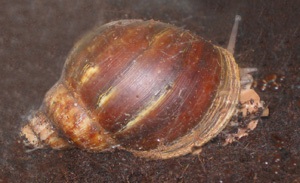 Whilst much can be learnt about the behaviour of molluscs by watching them in their natural habitats, what you see and learn is governed by the season of the year, the time of day, and for littoral marine species, the state of the tide. Keeping molluscs in captivity allows more controlled study to take place at times of your own choosing. Molluscs can be kept in marine or freshwater aquaria, or, for land gastropods, in terraria.
Whilst much can be learnt about the behaviour of molluscs by watching them in their natural habitats, what you see and learn is governed by the season of the year, the time of day, and for littoral marine species, the state of the tide. Keeping molluscs in captivity allows more controlled study to take place at times of your own choosing. Molluscs can be kept in marine or freshwater aquaria, or, for land gastropods, in terraria.
A knowledge of the mollusc's environmental requirements is essential. In setting up artificial homes for your chosen species you are effectively taking them on as pets and the appropriate consideration should be given for their living conditions. Terrestrial gastropods are perhaps the most difficult as the correct levels of light, air and humidity are essential. Then again, water quality is critical for aquaria. Before you set up your captive community, ensure you are fully informed as to the requirements of your chosen species.
Once you have set up your artificial habitat you can observe the animals as they go about their daily lives, and with time you may be rewarded with the pleasure of a breeding community. As they mature some shelled molluscs, as well as land slugs, experience morphological changes: shells do not always grow proportionately, and some juvenile land slug species may be very differently coloured from their adult form.
Keeping molluscs brings several responsibilities. It is important to bear in mind that if you choose a non-native species, such as the Giant African land snail and your snails breed, then young snails should be re-homed and on no account released into the wild.
- Keeping a marine aquarium - Provides a beginner with a good introduction to setting up a marine aquarium. (pdf ~ 400k download)
- Keeping Giant African land snails - Information on considerations for keeping Giant African land snails as pets
Other external links
There is a vast amount of other information on this subject available on line. For example:
Pet Snails - website devoted to keeping snails (and slugs) as pets
